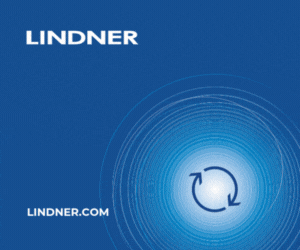plasticker-News
| 2009-07-06 |

|
DuPont: Renovated tropical greenhouse at the Botanical Garden in Berlin
|
Laminated safety glass with “UV- transmissible” DuPont™ SentryGlas® interlayers supports natural plant growth Following the renovation of the Grand Pavilion (das Große Tropenhaus, first built in 1906) at Berlin’s Botanical Garden, daylight enters through hundreds of small, heat-insulating yet highly light-permeable glass panes onto one of the world’s most significant collections of rare and endangered tropical plants. The inner panels used in the double-glazing for the overhead sections of the pavilion are made of laminated safety glass using stiff and strong DuPont™ SentryGlas® interlayers (www.dupont.com). For the first time in Germany – following its “special approval” – a special “UV-transmissible” grade of SentryGlas® is used for this application, thereby sustaining the active growth of the plants and safeguarding their preservation. Measuring 60 m long, 29 m wide and 26.5 m high, the Grand Pavilion is one of the largest self-supporting display greenhouses in the world, built without obstructive interior pillars. Its transparent shell, attached to a supporting structure, has a total area of 4,500 m², approximately 60 percent of which is overhead. Over the years, the shell had become both dull and leaky, making its extensive reconstruction essential. Acting as the client, the Freie Universität Berlin assigned the general planning of the project to the Berlin office of HAAS Architekten BDA. The work will be completed in the autumn of 2009. During the renovation work, the complete façade was replaced. During this process, high expectations were made in terms of safety and protection, heat insulation and the preferably unobstructed transmission of natural sunlight, including its UV portions. Meeting these requirements meant a venture into new territory, as such a versatile glass façade design had never been attempted anywhere else. The solution was developed by the architects and client in partnership with Radeburger Fensterbau GmbH (Radeburg-Bärwalde, Germany), the glass refiner and manufacturer Glas Trösch (Switzerland and Germany) and DuPont as the producer of laminated glass interlayers, which are used in architectural projects around the world. For the overhead sections, the multifunctional double-glazing consists of an external panel made of heat-strengthened single pane safety glass and an inner panel made of laminated safety glass. For each panel, the team selected EUROWHITE® from Glas Trösch, a highly transparent, extra-white float glass with a low iron-oxide content, supplied with a LUXAR® anti-reflex coating on the second surface. Its good heat insulation performance – the Ug-value measures 1.1 W/m² K – is the result of using a noble gas filling between the panels and a SILVERSTAR® EN plus Low-E coating on the third surface. “Initially we had difficulties sourcing a laminated safety glass which was UV-transparent,” explains the architect Friedhelm Haas. “Most of the traditional laminated safety glass interlayers are made of polyvinyl butyral (PVB). This contains a UV blocking filter, which prevents the yellowing of the interlayer and the fading of furnishings and works-of-art. The botanists, however, required the ingression of light with as close to natural levels of UV as possible in order to prevent unnatural plant growth, control the spread of pests and encourage blossom induction. When looking for alternatives, we read about the adoption of crystal-clear SentryGlas® interlayers from DuPont for the flat roof of an Amazonian rainforest exhibit in Barcelona in 2004, where – for the first time in Europe – an interlayer without a UV stabilizer was used.” Much like the standard grades, high UV-transmission SentryGlas® (the name of this special greenhouse grade) consists of a polymer which is inherently UV stable and therefore does not require a UV stabilizer for its own protection. All SentryGlas® interlayers, originally developed by DuPont for glazing in hurricane-prone regions, are renowned for their very good mechanical properties. Their strength is considerably higher than that of PVB, their stiffness is approximately 100 times higher. Laminated safety glass produced with SentryGlas® interlayers provides particularly high post-glass breakage performance and thus offers particularly high levels of safety and protection. Laminated safety glass with SentryGlas® interlayers may already be in use in many architectural installations around the world, yet until now there had been no planning approval in Germany for the specific combination of EUROWHITE® and High UV-Transmission SentryGlas®. Following an initiative by the technical department at the Freie Universität Berlin, comprehensive testing was commissioned to confirm its conformity with safety standards. Working in close cooperation with the curtain wall producer Radeburger Fensterbau, the department for steel and light metal construction at the University of Applied Sciences in Munich tested for properties such as tensile strength, impact protection, post-glass breakage performance, fire performance and long-term behaviour when exposed to simulated weathering. The results met all expectations and ultimately their efforts were rewarded: the building authorities in the state of Berlin granted “special approval” for the use of this innovative and highly functional glazing solution in the ambitious construction project. |
DuPont de Nemours (Deutschland) GmbH, Neu-Isenburg, Germany
 back to news list back to news list |  back to top back to top |









